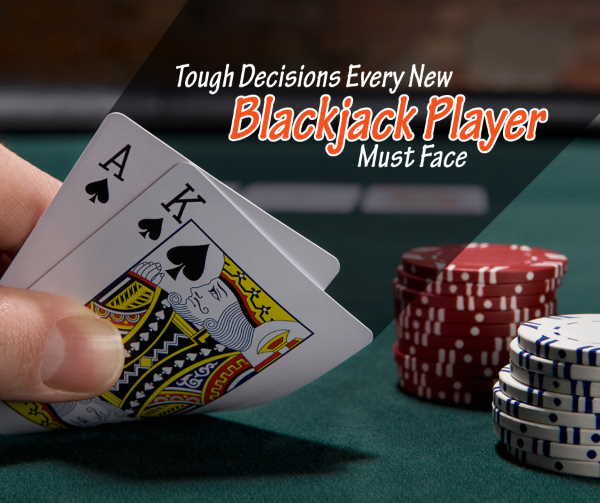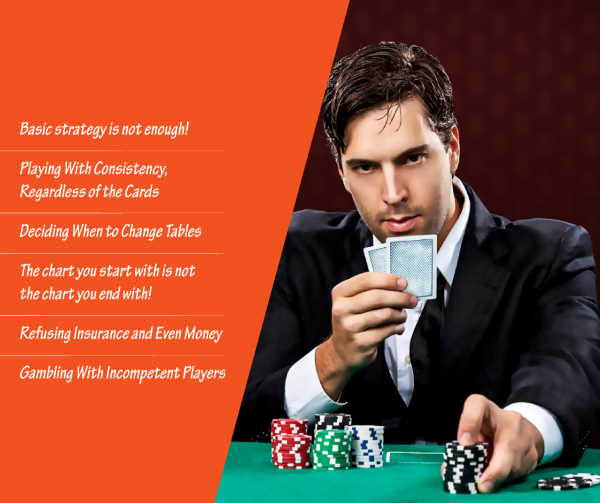
Blackjack may seem like a complicated game from the outside looking in, but regular players know that it’s not that complicated. Nonetheless, every blackjack player started out as being clueless about the game. We all have to start somewhere.
New players are often confronted with tight decisions when they first step into the blackjack table. These decisions may seem like second nature for seasoned blackjack players, but everyone can relate to the times when you had to think about these decisions like your entire bankroll depended on it.
To Hit or Stand
Hitting or standing is perhaps the most fundamental decision that you’d have to make at the blackjack table, but new players are often confused as to whether or not they’d want to take another card, thinking that a 10 and a 2 would be enough.
Newbies can indeed think that their weak hands are enough since they’re too scared to go over the dreaded 21, but sometimes there are just hands that you have to take chances with, or you wouldn’t be really playing blackjack and you’re just basically watching cards be dealt to you.
Doubling Down
It’s often tempting to double down when you think you have a passable hand if you’re a new player, but doubling down incorrectly is a sure way to drain your bankroll quickly. New players either double down too often or don’t double down at all, as knowing when to double down is often a matter of experience and of course, knowledge of blackjack strategy.
Splitting Pairs
Having a pair dealt to a new player will often lead to a tight decision, that is whether you should split a pair or not. Like every other decision, it has its upsides and downsides, and it seems like there’s never a true correct decision when you think about splitting a pair. It’s either you split and win twice what you would’ve won or you split and lose more than what you would have lost if you just didn’t split.
It’s always a situation of greener grass on the other side when you lose after splitting a pair, but with enough experience, you’d know when the right time to split a pair is and you won’t have regrets with your decisions even if you lose since you’re following optimal blackjack strategy.
The Chart for You
A great way to improve results if you’re a new blackjack player is to consult strategy charts. There are a variety of strategy charts to be found on the internet for virtually every type of blackjack game there is. However, something new players struggle with is using the right chart for their game.
It can get pretty confusing to decide on which chart to use when you don’t even know that there are actually different variants of the game of blackjack. However, there’s not shame in asking the dealer about what type of game is on your table and you can easily pull up a strategy chart for that type of game. Plus, it’s perfectly legal to consult a strategy chart while you’re at the blackjack table.
Playing with Consistency
Once you have a chart at your side or you’ve found a strategy that has been getting you decent wins, it’s essential to stick with it. It’s inevitable for you to not get it right at some point, and that’s just the way the game works. The time might even come that you find yourself on a losing streak even though you’re doing everything by the book.
When such a time comes, players, especially the less experienced ones, may think that they need to adjust how they play and either play too aggressively or too passively, which will definitely increase their losses. Optimal blackjack strategy shows its results in the long run, and that strategy must be followed consistently for the results to show up.
Deciding When to Switch Tables
There are times when the cards just aren’t going your way, or the people you’re playing with are getting on your nerves. This will make you prone to tilting which would lead to bad decisions and to the piling up of losses.
New players often push their luck at the same table until they lose all their money when all they needed was a change of pace or atmosphere. Switching tables is also useful when moving down stakes when you’re having a losing streak. If your bankroll it’s dwindling and you still wish to continue playing, it’s essential to play at lower stakes to minimize your possible losses.
Calling it a Day
An essential skill that all gamblers, especially blackjack players, should have is knowing when to back out of a game. More often than not, new players are too immersed in the experience and they play too much. They don’t know when to say that enough is enough and it’s likely that they get forced to leave in the end because they have no money left to bet. It’s important to remember to cash out before luck runs dry.














